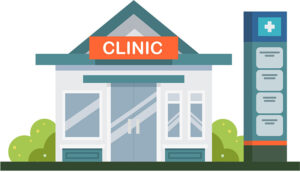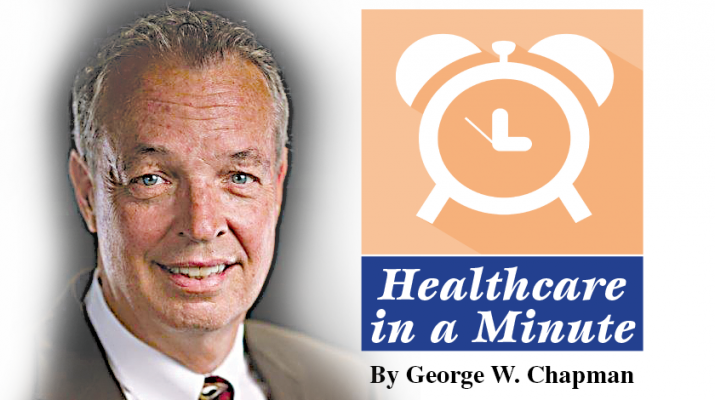By George W. Chapman
 It should come as no surprise that OB-GYNs in states with restrictive or confusing abortion laws are considering moving to states that won’t interfere in the care between doctor and patient. The Kaiser Family Foundation published an article about what is happening in Idaho, which just passed a restrictive abortion law. Seventy-five of 117 Idaho OB-GYNs surveyed by the Idaho Coalition for Safe Reproductive Healthcare indicated they were considering leaving the state. Of the 75, 73 said it was because of the newly passed restrictive abortion law. Rural hospitals, typically staffed with minimal OB-GYN physicians, may be forced to close maternal services, forcing pregnant women to travel hundreds of miles out of state to deliver. OB-GYNs provide a lot more health services to women besides maternal care. So, their departure from states with restrictive abortion laws will have a far greater impact on women’s overall healthcare than anticipated. A research paper published in February found 76% (3 of 4) current and future (residents and medical students) OB-GYNs won’t even apply to work in states with restrictive abortion laws. The threat of potential fines and even imprisonment was too much of a deterrent.
It should come as no surprise that OB-GYNs in states with restrictive or confusing abortion laws are considering moving to states that won’t interfere in the care between doctor and patient. The Kaiser Family Foundation published an article about what is happening in Idaho, which just passed a restrictive abortion law. Seventy-five of 117 Idaho OB-GYNs surveyed by the Idaho Coalition for Safe Reproductive Healthcare indicated they were considering leaving the state. Of the 75, 73 said it was because of the newly passed restrictive abortion law. Rural hospitals, typically staffed with minimal OB-GYN physicians, may be forced to close maternal services, forcing pregnant women to travel hundreds of miles out of state to deliver. OB-GYNs provide a lot more health services to women besides maternal care. So, their departure from states with restrictive abortion laws will have a far greater impact on women’s overall healthcare than anticipated. A research paper published in February found 76% (3 of 4) current and future (residents and medical students) OB-GYNs won’t even apply to work in states with restrictive abortion laws. The threat of potential fines and even imprisonment was too much of a deterrent.
Rise to Health
The American Medical Association (AMA), the Institute for Healthcare Improvement (IHI) and Race Forward are collaborating as “Rise to Health” to mitigate the barriers that must be overcome to achieve health equity among us all. Barriers such as cost, access, isolation, housing and food security and racism, all impede health equity. The three organizations representing providers, payers, pharma and numerous professional societies and associations are combining their heretofore disparate efforts in the battle against impediments to equity and establish a set of common measurements and goals. Hopefully, Rise to Health will address our fragmented healthcare system which frustrates providers and consumers alike.
Customer Satisfaction Declining
 According to a recently released study by J.D. Powers based on 32,656 interviews, customer satisfaction with commercial insurance plans is declining especially among Gen Y and Gen Z generations. Particularly low scores were given to customer service and communication. Only 17% of those who identified their health status as poor or fair were assigned a case manager. Care fragmentation (multiple providers and several prescriptions) usually leads to high costs, poor outcomes and increased patient frustration. Other scores that declined from previous studies were in coverage and benefits and provider choice. Low scores from new members indicate a need for insurers to do better job of onboarding or how to access benefits and navigate our complicates and fragmented healthcare system. Interestingly, digital health tool usage remained low.
According to a recently released study by J.D. Powers based on 32,656 interviews, customer satisfaction with commercial insurance plans is declining especially among Gen Y and Gen Z generations. Particularly low scores were given to customer service and communication. Only 17% of those who identified their health status as poor or fair were assigned a case manager. Care fragmentation (multiple providers and several prescriptions) usually leads to high costs, poor outcomes and increased patient frustration. Other scores that declined from previous studies were in coverage and benefits and provider choice. Low scores from new members indicate a need for insurers to do better job of onboarding or how to access benefits and navigate our complicates and fragmented healthcare system. Interestingly, digital health tool usage remained low.
Retail Clinic Usage Soars
 Over last five years, retail clinics have experienced a 200% increase in business. Compare that to a 13% decrease in traditional primary care business (private physicians and hospitals), a 70% decrease in urgent care business a 1% decrease in emergency room business. (The decrease in non-emergent visits in ERs is a good decrease.) The pandemic was probably a major cause for the 200% increase at retail clinics as consumers got used to getting vaccines and COVID-19 testing there, so primary care usage at these locations grew by association and convenience. Being associated with a drug chain like CVS or Walgreens further enhanced the convenience, continuity of care and one-stop shopping. Ninety percent of retail health clinics are owned by six huge corporations with CVS being the biggest. Believe it or not, the second largest operator of retail clinics is grocery giant Kroger. So, you can see your doctor, get a vaccination, get tested, get your prescription and grab a dozen eggs all in the same place. Most retail clinics are in the Southwest and Midwest.
Over last five years, retail clinics have experienced a 200% increase in business. Compare that to a 13% decrease in traditional primary care business (private physicians and hospitals), a 70% decrease in urgent care business a 1% decrease in emergency room business. (The decrease in non-emergent visits in ERs is a good decrease.) The pandemic was probably a major cause for the 200% increase at retail clinics as consumers got used to getting vaccines and COVID-19 testing there, so primary care usage at these locations grew by association and convenience. Being associated with a drug chain like CVS or Walgreens further enhanced the convenience, continuity of care and one-stop shopping. Ninety percent of retail health clinics are owned by six huge corporations with CVS being the biggest. Believe it or not, the second largest operator of retail clinics is grocery giant Kroger. So, you can see your doctor, get a vaccination, get tested, get your prescription and grab a dozen eggs all in the same place. Most retail clinics are in the Southwest and Midwest.
Monitor BP by Phone
The CDC estimates almost half of adults have hypertension. Engineers at UC San Diego have developed a simple clip that works with your smartphone camera and flash. It costs less than $1. It is so cheap it could be handed out by providers to their patients so they can easily monitor their blood pressure at home without the hassle of cuffs and BP monitors. The product is not yet available as the engineers are working on making the clip as user friendly as possible.
Healthcare in the Metaverse
Ever since Facebook introduced the metaverse (a digital world using virtual and augmented reality headsets) cash-rich CVS has filed for a trademark to sell their products in the metaverse. The pharmacy giant will begin to transition some in-store services like primary care, nutrition and wellness counseling to virtual. As they do so, a lot of people will lose their jobs as they plan to close 900 stores. CVS revenue last year was a staggering $304 billion. Meanwhile, cash-strapped hospitals still recovering from the pandemic are struggling to break even.
Caring for Resistant Elderly Parents
 You want to help but your 80-plus-year-old parents are resistant. They are confused or believe you are interfering or they are afraid of losing their independence. Possibly all the above. It is the dilemma confronting most family caregivers. Negotiation and dispute resolution may be the answer. Researchers at Northwest University conclude the very same negotiation and dispute resolution tactics that work for businesses can work for families. 1) Determine the clinical, personal and financial issues. 2) What are your parents’ positions? 3) Lay out what are you willing to do as caregiver. 4) Find common ground. 5) What are your parents’ fears? Both real and perceived. Mitigate everyone’s emotions. 6) Ask questions, don’t present parents with edicts. 7) Agree you are all on the same team. 8) If all fails, seek third party help from social workers, family psychologists or case managers. Above all, don’t let the relationship with your parents devolve into resentment.
You want to help but your 80-plus-year-old parents are resistant. They are confused or believe you are interfering or they are afraid of losing their independence. Possibly all the above. It is the dilemma confronting most family caregivers. Negotiation and dispute resolution may be the answer. Researchers at Northwest University conclude the very same negotiation and dispute resolution tactics that work for businesses can work for families. 1) Determine the clinical, personal and financial issues. 2) What are your parents’ positions? 3) Lay out what are you willing to do as caregiver. 4) Find common ground. 5) What are your parents’ fears? Both real and perceived. Mitigate everyone’s emotions. 6) Ask questions, don’t present parents with edicts. 7) Agree you are all on the same team. 8) If all fails, seek third party help from social workers, family psychologists or case managers. Above all, don’t let the relationship with your parents devolve into resentment.
Cost of Care Up 5.6% This Year
 The average annual increase in the cost of care since 2021 is 4.8%. According to the Milliman Medial Index, healthcare now costs a family of four just over $31,000 this year. It’s $7,221 for an individual. Healthcare inflation tends to lag six months to a year behind general inflation, so 2024 costs will probably go even higher. Driving costs up are supply chain problems, cost of drugs, labor shortages, ransomware attacks and catching up on the backlog of procedures postponed during the pandemic. Milliman expects employees will bear 60% of the increases. As discussed in an earlier column, commercial insurers are recoding record profits.
The average annual increase in the cost of care since 2021 is 4.8%. According to the Milliman Medial Index, healthcare now costs a family of four just over $31,000 this year. It’s $7,221 for an individual. Healthcare inflation tends to lag six months to a year behind general inflation, so 2024 costs will probably go even higher. Driving costs up are supply chain problems, cost of drugs, labor shortages, ransomware attacks and catching up on the backlog of procedures postponed during the pandemic. Milliman expects employees will bear 60% of the increases. As discussed in an earlier column, commercial insurers are recoding record profits.
 George W. Chapman is a healthcare business consultant who works exclusively with physicians, hospitals and healthcare organizations. He operates GW Chapman Consulting based in Syracuse. Email him at gwc@gwchapmanconsulting.com.
George W. Chapman is a healthcare business consultant who works exclusively with physicians, hospitals and healthcare organizations. He operates GW Chapman Consulting based in Syracuse. Email him at gwc@gwchapmanconsulting.com.

